Miles Whittaker, Cabaret Voltaire, and the Venue That Stole the Spotlight: Berlin Atonal’s Five Most Memorable Moments
Berlin Atonal, which wrapped up a five-day run in the German capital during the early […]
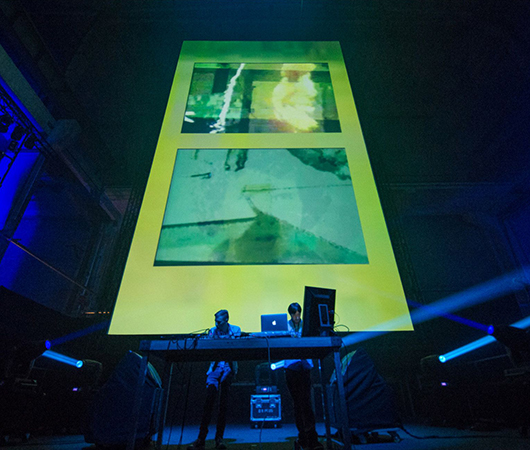
Miles Whittaker, Cabaret Voltaire, and the Venue That Stole the Spotlight: Berlin Atonal’s Five Most Memorable Moments
Berlin Atonal, which wrapped up a five-day run in the German capital during the early […]

Berlin Atonal, which wrapped up a five-day run in the German capital during the early hours of Monday morning, was ostensibly a music festival, but it was much more than that. Art and food also played a big role, but Atonal wasn’t really about those things either.
Oh, sure, some stellar performances were witnessed by thousands of people each night; art installations in five strategic locations complemented the music or provided a needed escape from it at times; and the nightly rotation of street food vendors, who fronted a grassy picnic area in what was an otherwise largely steel and concrete industrial environment, offered selections that ranged from British pork pies and Scotch eggs to German noodles and Japanese pancakes—and that was just on the closing night.
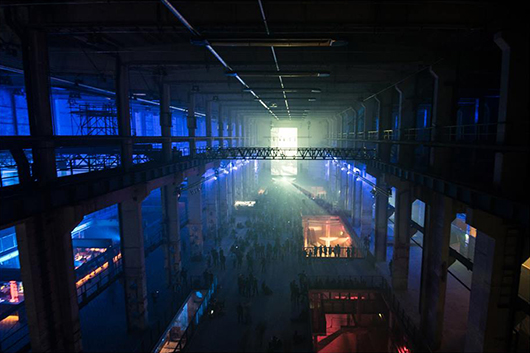
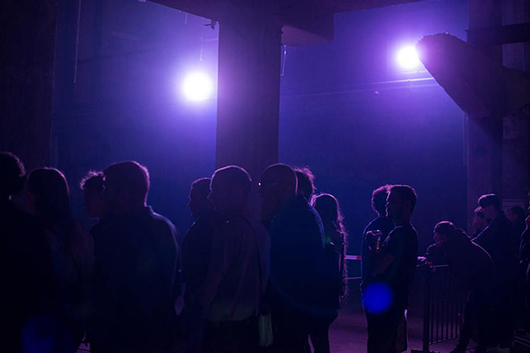
In the end though, Atonal was clearly about place—and a spectacular reuse of space. Kraftwerk Berlin, which sits inside the same building that houses Tresor, was Atonal’s primary home base, although the festivities were spread throughout the titanic, once-abandoned East Berlin power station that became the club’s new home in 2006. As the weekend came to a close, it was obvious that the venue was the hands-down star of the festival. (Let’s put it this way: the word “cathedral” was overheard multiple times throughout the long weekend.) Each night, people streamed into its bottom level, with a bar to the right, a merch table and coat check (it was an unseasonably chilly week in Berlin) to the left, and a newly built staircase awaiting directly ahead.
Up the stairs and to the left sat PARSEC, an installation that begged repeated visits. A vertical, audio-visual spinning machine consisting of 16 identical analog modular synthesizers and assembled with the intention of creating a swarming motion of sound and light, PARSEC kept plenty of people from immediately heading up an additional set of stairs to the right, even though that climb would ultimately lead them onto Kraftwerk Berlin’s massive main floor.
Still, it was on the main floor that people stood night after night (in fairness, some did sit cross-legged on the ground, as if they were perched on a green meadow or hill), in a space that was often tightly packed from front to back. Despite these crowded confines, they remained, 30 or 40 to a row, watching, listening, and dancing to an array of sounds that were not strictly dance music. In fact, many of Atonal’s offerings had little to do with the dancefloor, at least thematically. This was a quiet, respectful party, even though an overwhelming number of the people in attendance were young, in their early 20s or even younger. A healthy smattering of older geezers could be spotted in the crowd as well, but Atonal was a party all the same. People seemed genuinely thrilled to be there.
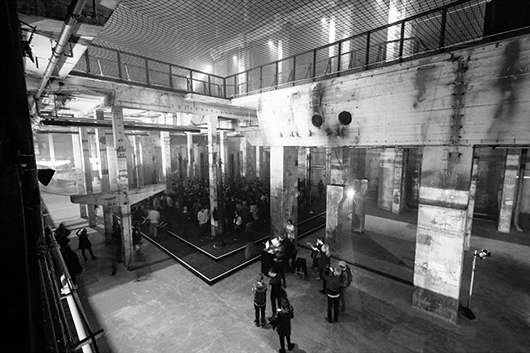
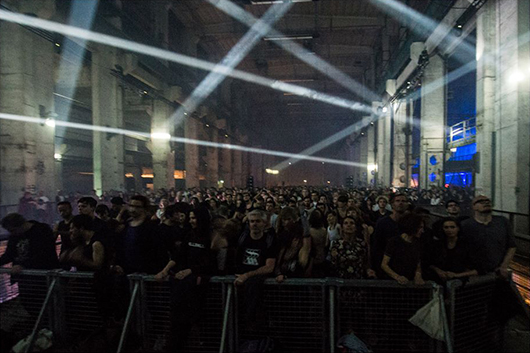
The first Berlin Atonal took place in 1982 at a location in Kreuzberg, which was then part of West Berlin. Last year, the festival was revived in its new location, following a break of more than 20 years. Despite this lengthy gap, Atonal’s founder, Dimitri Hegemann, who also launched Tresor in 1991, still has his hand in the current festival. However, the responsibility of running the day-to-day grind has fallen to younger acolytes Harry Glass, Paulo Reachi, and Lauren von Oswald—the nephew of Berlin techno master Moritz von Oswald of Basic Channel, Maurizio, Chain Reaction, and Rhythm & Sound fame.
Atonal line-ups have always been impressive, as groups like Psychic TV, Einsturzende Neubauten, Test Dept, and 808 State played during the early years, and when the festival was revived last year, Jon Hassell, Glenn Branca, Actress, Kassem Mosse, Vladislav Delay, and Juan Atkins were all part of the bill. In terms of talent, the 2014 edition was not only similarly excellent, but it also presented arguably the festival’s most diverse collection of performers to date; as such, its spotlight swayed between relatively unknown audio-video projects like Dasha Rush presents Antarctic Takt and more established veterans like Canadian soundscaper Tim Hecker. Ike Yard represented for the no wave crowd, while those craving something more ambient could take solace in the sounds of drum & bass production team Source Direct and techno groover TV Victor. There were ambient groups producing pure pastoral bliss, dark noise crews that artfully blackened the mood of the big room, and other outfits that did a little of each. Simply put, Atonal showcased a lot of challenging music, and that music was made all the more impressive by the fact that it was being presented in a space that challenged the artists right back (with its enormity, not its acoustics; in fact, the sound quality throughout the festival was uncannily superb, with no annoying echo or delay mucking up the performances).
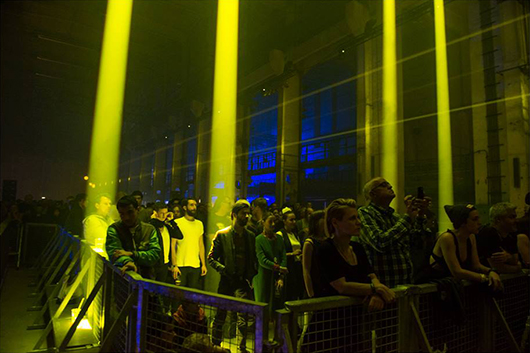
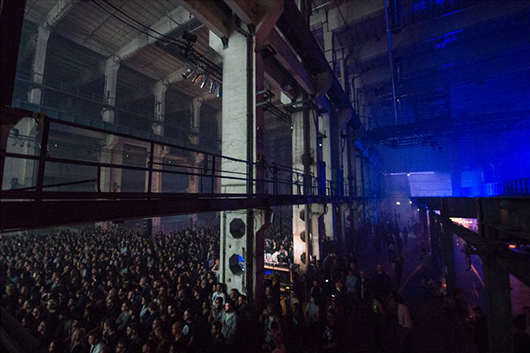
As thrilling as the main stage of Kraftwerk Berlin proved to be, its shows generally wrapped up around midnight or so, which would have been rather early by Berlin standards. But the festival didn’t end there, as organizers planned an extensive series of aftershows, which prompted actual Tresor-style, 12-hour dance marathons that raged through the night and into the following afternoon. However, while some Atonal festivalgoers took part in both the festival proper and these late-night activities, for the most part, the aftershows played host to a different crowd, one that was slightly younger. Spread across the Globus and Ohm spaces (which are also part of the Tresor complex), along with Tresor itself, the aftershow line-ups featured mostly DJ sets, and included the likes of Millie & Andrea, Pinch, Powell, Scion, Vessel, Roly Porter, James Ginzburg, Alec Empire, talent from the Liberation Technologies imprint, and others.
As if that wasn’t enough, Atonal also put together a number of panel discussions, workshops, and seminars, all of which were set in an old control room of the power plant. In short, there was more than enough activity on offer throughout Atonal’s five days, and although it would have been impossible to experience it all, we’ve put together a list of five particularly memorable highlights.
Atonal 4D
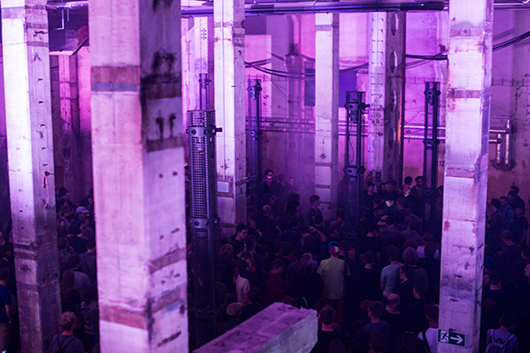
Biosphere
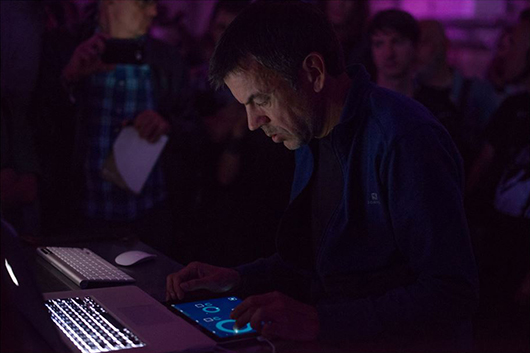
5. Atonal 4D series
Not everyone agreed that these micro-concerts, which took place on the bottom level of Kraftwerk Berlin, were special. The shows started early (6 p.m.), and were often so crowded that the artist could only be heard and not seen. On the other hand, there was something perfect about seeing boundary-pushing artists like Norway’s Biosphere, Mexico’s Murcof, and Germany’s Senking circled by adoring fans, extraordinary architecture, and a unique surround-sound system. (Side note: the 4D soundsystem was designed by engineers in Amsterdam and was also used for a continuously running installation by Thomas Vaquie when the live shows were not happening.) Minor grumbles aside, the experience of being at the 4D shows was a singular one, and they proved to be immensely popular; both Murcof and Biosphere wound up performing an extra set at 7 p.m. to accommodate the high demand.
Ensemble Modern
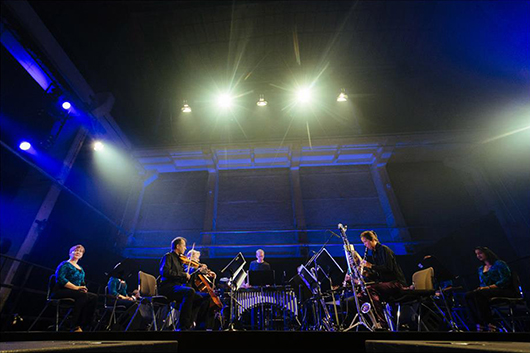
4. Opening night
An air of intense anticipation marked the start of Atonal on Wednesday night. Organizers and fans alike were buzzing, but most of the opening-night pressure fell upon the Ensemble Modern, a company based in Frankfurt with musicians from all over the world. The group had been tasked with interpreting Steve Reich’s Music for 18 Musicians, a modern classical standard bearer from 1978 that laid the groundwork for all sorts of minimalism that followed. As it turned out, there was no need for the audience to worry, as the piece—a series of 10 pulses, including repetitive melodies and vocal harmonies—was rendered with grace and a loving, expert touch. The ensemble also performed another famous Reich number, Drumming Part 1. (Reich himself, now 77, had considered attending, but ultimately did not make the event.)
Also part of the opening night line-up were Austrian media artist Konrad Becker, who performed as Monoton, and Imaginary Softwoods, an audio-visual project of former Emeralds member John Elliott, which featured Dutch video artist Tarik Barri.
DSCRD
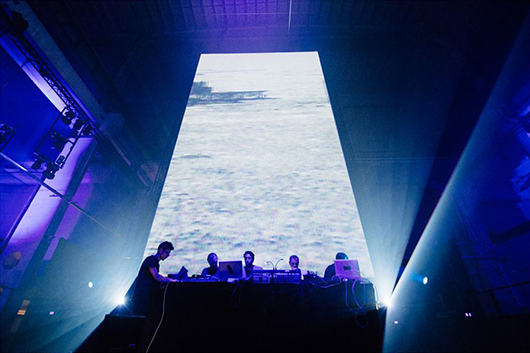
3. DSCRD, Dalhous, and Sendai
Though they did not play consecutive sets on Thursday night, the live performances from French digital/analog band DSCRD, Edinburgh duo and Blackest Ever Black affiliate Dalhous (pictured at top), and Sendai (the collaborative project of Belgian artists Peter van Hoesen and Yves de Mey) configured into a suite of sorts, bringing together elements of noise, assertive African-inspired drum programming, and blissed-out ambient interludes. With five scruffy guys on stage, all of them perched behind computers, controllers, and other hardware, DSCRD scored points simply for looking a bit odd. Sendai let its music do the talking, and the pair unfurled some absolutely fierce rolling basslines. Dalhous was perhaps the most adventurous of the three, and dared to be ugly, then pretty, before wrapping up its set by bringing the program back into the darkness in which it started.
Miles Whittaker
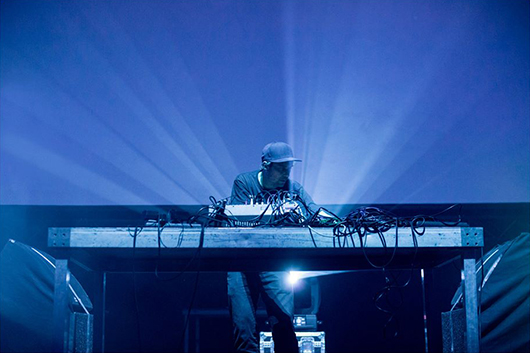
2. Miles Whittaker
Miles Whittaker‘s Atonal set on Thursday night was billed as his solo debut in Germany, though it’s worth noting that he lives in Berlin now and has previously performed in the city as one half of Demdike Stare. It was also promoted as an A/V performance, which had prompted festivalgoers to speculate about what sort of visual weirdness Whittaker would bring to the table, especially given the bewitching film work that Demdike Stare has concocted in past. However, once the performance began, no video was screened; more importantly, it didn’t seem to matter. In the end, the lack of visuals actually worked to give the music—a smart, subtle hybrid that combined elements of Berlin, Detroit, and Manchester—a sharper focus. Working deliberately, Whittaker would add one rhythmic element after another, each one giving the music a little more life; eventually, his creations felt like they were swirling and soaring on their own. The momentum kept building as he moved through through acid, dub, and even UK hardcore, and as the journey came to a close, it was clear that Whittaker had put together a stunningly compelling session that was somehow both grimey and beautiful at the same time.
Cabaret Voltaire
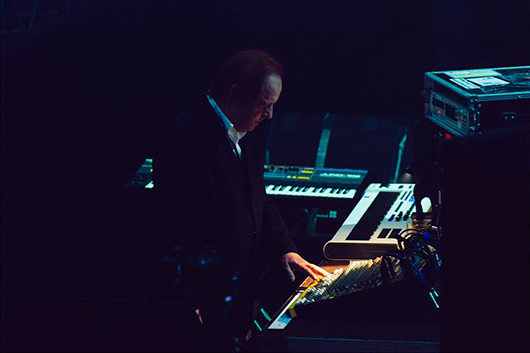
1. Cabaret Voltaire
There was more than enough excitement to go around in the days and weeks leading up to Atonal 2014, but the most anticipated appearance had to be that of Richard H. Kirk, who alone carried the burden of representing Cabaret Voltaire. (In its ’80s and ’90s heyday, the group featured three performers: Stephen Mallinder, Chris Watson, and Kirk. Watson—now a recordist for the BBC—and Mallinder are not part of the current project.) When the show was announced, Kirk had said he was not interested in making Cabaret Voltaire into a nostalgia act, and his performance on Saturday night proved that he was not kidding. Playing to what was clearly the largest crowd of the entire festival, his music was raw and loud, combining rapid-fire beats, strange vocal snippets, and guitar samples that had been converted into driving, synthetic shards of hot white noise. Stylistically, there was an undeniable similarity to classic Cabaret Voltaire, but the sound was also very much of the now, and quite modern.
Kirk also brought three VHS tapes, which were split vertically across the stage’s massive screen backdrop. The effect was hallucinatory, as images of ’80s political leaders (Ronald Reagan, Margaret Thatcher, Muammar Gaddafi) and pop-culture icons (Andy Warhol, Francis Bacon) were cut up, bleached out, and mixed with violent imagery showing African revolutionaries, Islamist militants, and other people at war. Although the footage was vintage, it was still shocking—mostly because these kinds of scenes are still commonplace in much of the world.
Honoring the past while operating in the present and looking toward the future, Kirk’s performance as Cabaret Voltaire was a great comeback, but it was also symbolic of what made Atonal such a rich and engaging experience. While the venue may have ultimately stolen the festival spotlight, it was the organizers’ curatorial vision, which traced lines through decades of avant garde and experimental sounds right up to the present and into the future, was unique, even in the context of an increasingly crowded festival landscape. In the years to come, it’s a safe bet that plenty of festivalgoers will come to Atonal simply to gawk at the expansive confines of Kraftwerk Berlin, but they’ll stay—and likely return in the years that follow—because of the inventive sights and sounds that they’ll find once they walk through the door.

